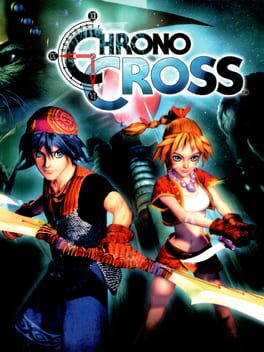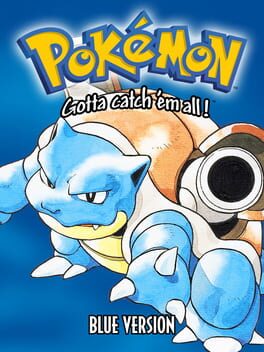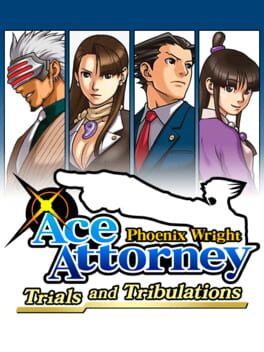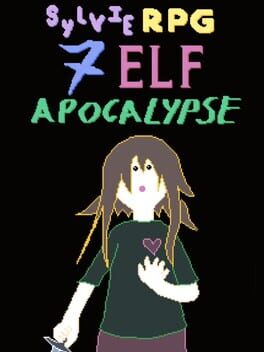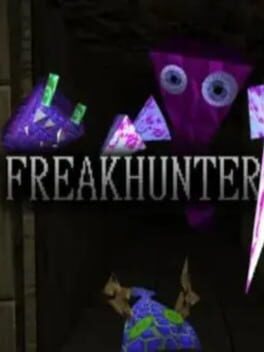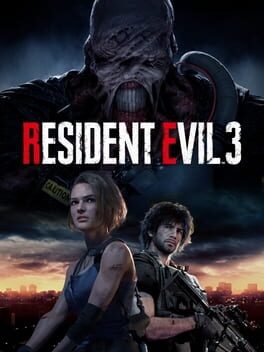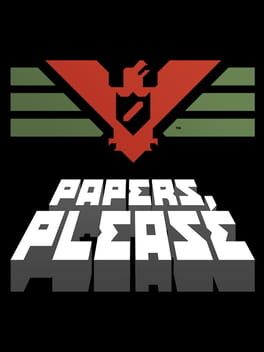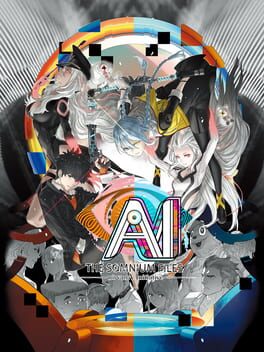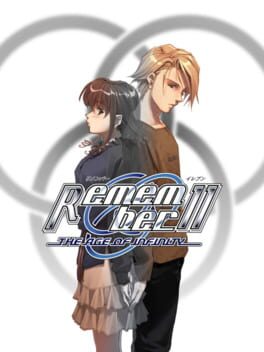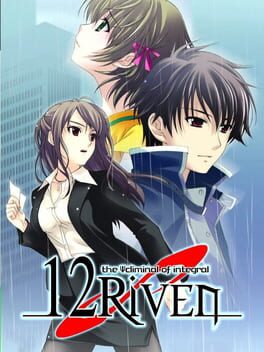Executive_Koala
12 Reviews liked by Executive_Koala
Chrono Cross
1999
Instead of dancing around the fact that this is a sequel to chrono trigger let’s embrace and define what made made it special to everyone because it's hard for me not to talk about it when comparing and contrasting. To someone who might not have played a lot of RPGs, pretty much everything about the game would stand out to them and realistically they wouldn't be able to realize what actually made it special because they haven't played the games that lead to it's creation, namely final fantasy and dragon quest. I'm not going to act like trigger had an incredible story or cast of characters, because it didn't. It was fine it had it's moments and it wasn't bad by any means but it was refined, a word I could use to define the entirety of the game. I'm also not going to act like a lot of what trigger did wasn't done before, because pretty much everything was done before and it's a common misconception and because of the lack of knowledge people have everyone acts like it's the best without actually realizing it, or at least that's the conclusion I came to.
It's important to look at chrono trigger as a meta-analysis for rpgs which sounds extremely fucking pretentious and trust me it is but it means combining the efforts and work of many others work and making it one big easily digestible whole for everyone to enjoy. I loathe yapping about trigger as much as i do like and respect it but i had to get it out of the way before i started talking about this gem
What confused me about chrono cross is that all i've ever heard about it is a bunch of 50/50 bullshit where people either love it or hate it. I'm sitting here playing this fucking game and all im experiencing is what made trigger special and then some. By that i mean the meta-analysis bullshit i mentioned except it expanded on it and made everything it did even better. I'm talking about the extremely minute shit like running from boss battles, something I wouldn't have even noticed until I accidentally pressed the button and feared that I wasted a turn, only to find out that it backed me out of the fight and pulled up the menu screen so I could reorganize my magic and heal. Normally I would say that this is making the game far too easy, but because the game doesn't have a conventional leveling system it forces you to learn the combat and utilize your tools. It doesn't want you to lose 2 hours of progress unless you're a dumb ass and forgot the option to run existed because you're burned from horribly designed 90s rpgs that work against you, it wants you to learn and have fun. That is true accessibility beyond yellow paint and map markers
I can understand why it's combat might not be for everyone, because it really is jarring at first and makes little to no sense but once you understand the system it fucking rocks. I ended up liking it just as much as triggers once more magic spots opened up on my characters. What I don't understand is why the fuck people hate this story. You guys actually fucking suck for telling me it was bad stop with the horrible follow up to chrono trigger brainwashing and take the updated media literacy test. The test is enjoying this game and the price of failing is your backloggd account which will get removed if you type the words "bad follow up to chrono trigger" in your review. I think if this game had the same art style as trigger there would have been no controversy or bad follow up bullshit to be heard and everyone would have loved this game just as much if not more
I'm separating this last part from my review because i think it's the most important part of the review but just so everyone knows Masato Kato, the story writer for trigger was handed the reins to the chrono series by it's original creators because he understood the intricacies of trigger, the fucking the composer Yasunori Mitsuda even considered him to be a director of trigger even though he wasn't. He didn't ruin the story he expanded on his own work. Not sure what the argument is there. That's not to say a follow up by original creators has to be all good and no error, but it truly is a great follow up for all of those reasons and more.
It's important to look at chrono trigger as a meta-analysis for rpgs which sounds extremely fucking pretentious and trust me it is but it means combining the efforts and work of many others work and making it one big easily digestible whole for everyone to enjoy. I loathe yapping about trigger as much as i do like and respect it but i had to get it out of the way before i started talking about this gem
What confused me about chrono cross is that all i've ever heard about it is a bunch of 50/50 bullshit where people either love it or hate it. I'm sitting here playing this fucking game and all im experiencing is what made trigger special and then some. By that i mean the meta-analysis bullshit i mentioned except it expanded on it and made everything it did even better. I'm talking about the extremely minute shit like running from boss battles, something I wouldn't have even noticed until I accidentally pressed the button and feared that I wasted a turn, only to find out that it backed me out of the fight and pulled up the menu screen so I could reorganize my magic and heal. Normally I would say that this is making the game far too easy, but because the game doesn't have a conventional leveling system it forces you to learn the combat and utilize your tools. It doesn't want you to lose 2 hours of progress unless you're a dumb ass and forgot the option to run existed because you're burned from horribly designed 90s rpgs that work against you, it wants you to learn and have fun. That is true accessibility beyond yellow paint and map markers
I can understand why it's combat might not be for everyone, because it really is jarring at first and makes little to no sense but once you understand the system it fucking rocks. I ended up liking it just as much as triggers once more magic spots opened up on my characters. What I don't understand is why the fuck people hate this story. You guys actually fucking suck for telling me it was bad stop with the horrible follow up to chrono trigger brainwashing and take the updated media literacy test. The test is enjoying this game and the price of failing is your backloggd account which will get removed if you type the words "bad follow up to chrono trigger" in your review. I think if this game had the same art style as trigger there would have been no controversy or bad follow up bullshit to be heard and everyone would have loved this game just as much if not more
I'm separating this last part from my review because i think it's the most important part of the review but just so everyone knows Masato Kato, the story writer for trigger was handed the reins to the chrono series by it's original creators because he understood the intricacies of trigger, the fucking the composer Yasunori Mitsuda even considered him to be a director of trigger even though he wasn't. He didn't ruin the story he expanded on his own work. Not sure what the argument is there. That's not to say a follow up by original creators has to be all good and no error, but it truly is a great follow up for all of those reasons and more.
Pokémon Blue Version
1996
This game is such an interesting abstraction of the Japanese cityscape and countryside: I would say it feels most not like a central-Tokyo but like it was designed by someone who lived in one of the major cities an hour or two from central Tokyo. You get the occasional dense area with a skyscraper or two (Saffron City), dense collections of single family homes (Celadon City), but there's still the countryside running through mountains and forests, farming towns here and there.
That is easily Pokemon Blue's most interesting trait: it's a world based on reality, but not in the direction of an Earthbound that's more focused on constantly parodying America or people. Pokemon Blue is a game more interested in the idea of adding a layer of mystery (world of pokemon) and exaggeration (everyone catches pokemon!) to the mundane normal everyday life. I imagine this (and the affordances of the Game Boy and the 151 pokemon, and the marketing efforts of Nintendo) is what helped to capture the minds of the initial millions of players! I'm not sure how much of that exists today, where the series feels a bit more phoned in and calculated.
It's honestly quite disturbing the extent that Satoshi Tajiri's artistic idea become full-on media-mix/anime-ified - most symbolic of this is how sprites underwent slight revisions between the original JP red/green to US red/blue to yellow to bring things 'more in line with the anime' - a direction which, I think, informs the series direction today: something that's more interested in doing only what's necessary to keep the brand going, rather than an interest in the kind of design fundamentals Tajiri/team had that allowed them to conceive of Pokemon Blue in the first place.
The story in Blue is most interestingly not at all much of an anime story. Nobody is really fleshed out except potentially Giovanni, the game feels like a series of vignettes where the sport-like Pokemon battling at times briefly overlaps with the reality of our world. Lt. Surge fought with pokemon in a war, Mew is from South America, the moon landing happened in 1969, people are addicted to gambling, there's a crime syndicate, pokemon can die and become ghosts. There's a lot of room for your imagination to think about.
I loved the underground walkways that feel like the long, underground train station walkways in Japan, or even arguably underground shoutengai (https://en.wikipedia.org/wiki/Sh%C5%8Dtengai). How the Celadon "Mansion" is a mistranslation of the Japanese Manshon (often a 5-10 story apartment or mixed use building), how it has the Game Freak devs. The department store inspired by big Japan department stores.
I think the first 2/3 of this game (through Silph Tower) is really well paced, I love how you go between countryside exploration and weird little dungeons in urban settings or caves. The last 1/3 of the game feels a bit more out of place - the 'science' angle, while interesting, kind of starts and ends with Cinnabar island. Seafoam Island and Victory Road are fine, but they feel less connected to the whole game's sense of place compared to e.g. the rocket base or mt. moon. I don't think this detracts from the strength of the game, but the game did feel like it was dragging by that point - the fact it began doing block puzzles might be symbolic of that. (Ha ha)
An aside: The core of the "trainers are multiple pokemon, random encounters are one pokemon" is a brilliant design choice - they can express trainer personality through this, they can characterize spaces like dungeons or caves based on who is there. I actually wanted to see more of the Viridian Forest-type dungeon - where not everything is a random encounter tile.
--
After playing, it does feel like the game is at a bit of a crossroads. I think Tajiri definitely had more he wanted to do with his vision, but they may not have been in-line with the more obvious routes to 'improving' the game.
The more obvious routes, to me, neither of which interest me personally, are:
- Increasing the traditional storytelling: clear villain characters, more cutscenes, more regularly paced villain-related levels. This could help attract an audience put off by the way Pokemon Blue feels like falling into a story at times (which I personally prefer, haha). It would also increase franchise tie-in and business synergies!
- Making the battle system 'better' and not a pushover. Make the game more technical, increase training options, create harder battles or challenges - as this would be the only way to 'balance' the game from becoming too easy. This lays a lot of weird traps though, and I think pokemon's devs fell into most of them: stark divides between the 'true combat postgame', many compulsive traps around perfecting stats/builds (rather than letting you teambuild freely), etc.
Personally I would have liked it if the game went harder on the weird influences and level layouts, maybe experimenting with a smaller level range or different methods of training other than bland 'QoL' features to help even leveling... but hey! I'm not the billionaire company here...
That is easily Pokemon Blue's most interesting trait: it's a world based on reality, but not in the direction of an Earthbound that's more focused on constantly parodying America or people. Pokemon Blue is a game more interested in the idea of adding a layer of mystery (world of pokemon) and exaggeration (everyone catches pokemon!) to the mundane normal everyday life. I imagine this (and the affordances of the Game Boy and the 151 pokemon, and the marketing efforts of Nintendo) is what helped to capture the minds of the initial millions of players! I'm not sure how much of that exists today, where the series feels a bit more phoned in and calculated.
It's honestly quite disturbing the extent that Satoshi Tajiri's artistic idea become full-on media-mix/anime-ified - most symbolic of this is how sprites underwent slight revisions between the original JP red/green to US red/blue to yellow to bring things 'more in line with the anime' - a direction which, I think, informs the series direction today: something that's more interested in doing only what's necessary to keep the brand going, rather than an interest in the kind of design fundamentals Tajiri/team had that allowed them to conceive of Pokemon Blue in the first place.
The story in Blue is most interestingly not at all much of an anime story. Nobody is really fleshed out except potentially Giovanni, the game feels like a series of vignettes where the sport-like Pokemon battling at times briefly overlaps with the reality of our world. Lt. Surge fought with pokemon in a war, Mew is from South America, the moon landing happened in 1969, people are addicted to gambling, there's a crime syndicate, pokemon can die and become ghosts. There's a lot of room for your imagination to think about.
I loved the underground walkways that feel like the long, underground train station walkways in Japan, or even arguably underground shoutengai (https://en.wikipedia.org/wiki/Sh%C5%8Dtengai). How the Celadon "Mansion" is a mistranslation of the Japanese Manshon (often a 5-10 story apartment or mixed use building), how it has the Game Freak devs. The department store inspired by big Japan department stores.
I think the first 2/3 of this game (through Silph Tower) is really well paced, I love how you go between countryside exploration and weird little dungeons in urban settings or caves. The last 1/3 of the game feels a bit more out of place - the 'science' angle, while interesting, kind of starts and ends with Cinnabar island. Seafoam Island and Victory Road are fine, but they feel less connected to the whole game's sense of place compared to e.g. the rocket base or mt. moon. I don't think this detracts from the strength of the game, but the game did feel like it was dragging by that point - the fact it began doing block puzzles might be symbolic of that. (Ha ha)
An aside: The core of the "trainers are multiple pokemon, random encounters are one pokemon" is a brilliant design choice - they can express trainer personality through this, they can characterize spaces like dungeons or caves based on who is there. I actually wanted to see more of the Viridian Forest-type dungeon - where not everything is a random encounter tile.
--
After playing, it does feel like the game is at a bit of a crossroads. I think Tajiri definitely had more he wanted to do with his vision, but they may not have been in-line with the more obvious routes to 'improving' the game.
The more obvious routes, to me, neither of which interest me personally, are:
- Increasing the traditional storytelling: clear villain characters, more cutscenes, more regularly paced villain-related levels. This could help attract an audience put off by the way Pokemon Blue feels like falling into a story at times (which I personally prefer, haha). It would also increase franchise tie-in and business synergies!
- Making the battle system 'better' and not a pushover. Make the game more technical, increase training options, create harder battles or challenges - as this would be the only way to 'balance' the game from becoming too easy. This lays a lot of weird traps though, and I think pokemon's devs fell into most of them: stark divides between the 'true combat postgame', many compulsive traps around perfecting stats/builds (rather than letting you teambuild freely), etc.
Personally I would have liked it if the game went harder on the weird influences and level layouts, maybe experimenting with a smaller level range or different methods of training other than bland 'QoL' features to help even leveling... but hey! I'm not the billionaire company here...
Great BUMP Action RPG, and a great length at about 1-2 hours! https://sylvie.itch.io/sylvie-rpg
I like how compact the world is and how that allows you to switch between modes of playing quickly - trying to open up each room's secret entrances, grinding for money, trying to survive and form a mental map of an area... the game has a lot of playfulness in its secrets designs that show lineage from older action RPGs like Golvellius, Ys. That era of games are a lot of fun, but they sometimes have moments where moon logic or difficult mapping efforts are needed to complete them. I enjoy that to an extent, but I like the way that Sylvie RPG takes some of the mystique those games achieve but presents it in a way that allows the game to stand more on its own as a whole (without requiring the need to look up a guide.) It's a hard balance to keep a game feeling mysterious and challenging without sending people off to the guides, and I think this game balances everything well. There's secrets I couldn't figure out, but I'm proud to have cleared the game on my own!
Additionally, if you pay for the game you can get bonus files, including a design analysis of the game. It was interesting to read this for a number of reasons. For one, the game cites Angeline Era as a minor influence to one aspect of the combat (opting for Angeline Era style bump-combat (you can attack an enemy from any direction), vs. Ys's "hit the enemy at an angle").
This is an interesting thing to see because Sylvie RPG was made and released while Angeline Era is still in development. There's very few bump action games out there, so being able to play Sylvie RPG and read about it was useful as a point of comparison.
In the design notes, Sylvie describes the "Three Modes of Play" idea that was a guiding principle - in this case, "Exploration", "Resource Gathering" and "Stage Clearing". It's three modes of play that many Action Adventures/RPGs tend to have in various ratios. I think the choices the game makes (de-emphasizing Stage Clearing for the other two) work well. Sylvie RPG does feature 'stages' (defeating bosses) but much of the time is spent poking around the screens and trying to uncover secret caves on each screen. These range from grottos you can buy swords in, to shortcuts, to little helper cats who will come fight with you.
There's neat decisions related to this - like how bosses respawn you near the fight entrance, but you start with the stats you initially reached the boss at.
I also found it interesting that Sylvie RPG's conclusions about defense are similar to the ones we have in Angeline Era, in that for games with more of a focus on action and smaller numbers (where enemies often take a few hits to kill), defense items are hard to balance. Because flatly making everything in the game less threatening is not always an ideal choice. I liked Sylvie RPG's solution which lets you get shields, which negate most damage, but you drop the shield if hurt (and have to pick it up, which can be dangerous.)
Anyways, above all else it's an interesting game world to explore. Go play it! Support bump combat
I like how compact the world is and how that allows you to switch between modes of playing quickly - trying to open up each room's secret entrances, grinding for money, trying to survive and form a mental map of an area... the game has a lot of playfulness in its secrets designs that show lineage from older action RPGs like Golvellius, Ys. That era of games are a lot of fun, but they sometimes have moments where moon logic or difficult mapping efforts are needed to complete them. I enjoy that to an extent, but I like the way that Sylvie RPG takes some of the mystique those games achieve but presents it in a way that allows the game to stand more on its own as a whole (without requiring the need to look up a guide.) It's a hard balance to keep a game feeling mysterious and challenging without sending people off to the guides, and I think this game balances everything well. There's secrets I couldn't figure out, but I'm proud to have cleared the game on my own!
Additionally, if you pay for the game you can get bonus files, including a design analysis of the game. It was interesting to read this for a number of reasons. For one, the game cites Angeline Era as a minor influence to one aspect of the combat (opting for Angeline Era style bump-combat (you can attack an enemy from any direction), vs. Ys's "hit the enemy at an angle").
This is an interesting thing to see because Sylvie RPG was made and released while Angeline Era is still in development. There's very few bump action games out there, so being able to play Sylvie RPG and read about it was useful as a point of comparison.
In the design notes, Sylvie describes the "Three Modes of Play" idea that was a guiding principle - in this case, "Exploration", "Resource Gathering" and "Stage Clearing". It's three modes of play that many Action Adventures/RPGs tend to have in various ratios. I think the choices the game makes (de-emphasizing Stage Clearing for the other two) work well. Sylvie RPG does feature 'stages' (defeating bosses) but much of the time is spent poking around the screens and trying to uncover secret caves on each screen. These range from grottos you can buy swords in, to shortcuts, to little helper cats who will come fight with you.
There's neat decisions related to this - like how bosses respawn you near the fight entrance, but you start with the stats you initially reached the boss at.
I also found it interesting that Sylvie RPG's conclusions about defense are similar to the ones we have in Angeline Era, in that for games with more of a focus on action and smaller numbers (where enemies often take a few hits to kill), defense items are hard to balance. Because flatly making everything in the game less threatening is not always an ideal choice. I liked Sylvie RPG's solution which lets you get shields, which negate most damage, but you drop the shield if hurt (and have to pick it up, which can be dangerous.)
Anyways, above all else it's an interesting game world to explore. Go play it! Support bump combat
Pikmin 4
2023
Freakhunter
2023
Freakhunter
2023
Resident Evil 3
2020
Papers, Please
2013
I think about this game a lot. At least once or twice a week. It used to be more, but then I became self-employed.
There are a lot of great journalistic thinkpieces and independent navel-gazing out there that very accurately surmise Papers, Please as an excellent depiction of the inherent inhumanity of border control as well as what it's like to live under a fascist regime even in a position of 'power'.
Those are all valid and well done, I love them myself, but there's one angle I rarely if ever see come up:
This game is a shockingly and deeply uncomfortable representation of what it's like to work in customer service, administration, or - god forbid - Human Resources.
It's easy to nod and maybe even laugh when you're told "Dismiss anyone who seems suspicious. Typos are the devil. Anyone from [x] region." I sure did when this game came out.
Then I was put in charge of filtering out CVs and highlighting 'suitable applicants'. I was told to dismiss anyone with inconsistencies or oddities, to immediately shred a CV with any typos, and to be [direct quote] "cognizant of anything unusual on the name front". Many of the people I authorized made it to the interview and failed miserably. Suddenly, the game becomes a lot more real. I quit that job after a year or so.
People often bring up how awful it is to be faced with someone who's broken the rules or is a 'valid rejection' despite making earnest pleas, having family or some other such reason. I often bring up how, working for both a large retailer and a branch of the government which dealt with benefits claimants, this was my average shift. Indeed, if you've been on either side of claiming benefits in the UK (I've been on both), this game goes from uncomfortable to stomach churning. There's a reason I quit the latter job within three months.
And, in both the game and bureaucracy, 'doing good' is at best inconvenient and at worst actively self-sabotaging. It's nice to do good. It's nice to be nice. But apartments cannot be warmed as easily as hearts, and while you may be okay with a heartfelt 'thanks' from a desperate customer/claimant, landlords tend to prefer cash. In PP the consequences are an immediate citation, in reality they're far more insidious. 5 shifts on the schedule turns into 2, and 2 turns into 0. All without a word, a tyrannical silent punishment for the sin of having a soul. Not as instant as a citation, but the effects are the same.
Unlike reality, however, PP believes in empowerment. You, a lowly border control inspector, can potentially dismantle the fascist regime you operate under and really stick it to the machine. It's nice, cathartic even. This game's most emotional moments are often the understated weight of a hopeless person coming up against the dehumanizing maws of fascism and passing through unscathed, conveyed with little more than sprites and brief popup text. Lucas Pope's specialty, honestly.
But in a game so deeply steeped in the miserable, beige parts of the modern world, it's the one part which is sadly divorced from it. A world where middle managers can effortlessly snuff out any act of rebellion is not a world where one goblin in a cubicle can tear down capitalism. Sometimes, your rebellion never gets further than sighing and offering someone a 100% refund when they're only entitled to 75%, and then bullshitting your manager that they had a 'convincing story' (your dad lies better) and 'you were tired' (of the job, perhaps, but the 3 coffees in my body are necromantic).
I come back to this game a lot. I own it on Steam and have for about 7 years now, but I always play it on a pirated copy I stuck on a USB stick ages ago. Dunno why. Maybe it makes me nostalgic for using it to slack off at, ironically, my old receptionist job. I like to read what people think of it, but am always a bit disheartened to see a somewhat rigid interpretation of the game as just about border control, fascism or the Soviet Union. No other game has captured just how corruptive, anti-human and so deeply boring the evils of bureaucracy are.
There's an ending you can get if you remain loyal to the government. You only need to be loyal. Doesn't matter if you're bad at your job, only that the Arstotzkan government knows you say 'thank you sir' as its iron grip tightens around your throat. I got this ending on my most recent playthrough. It reminded me of a good 60% of my managers, and a co-worker I had named Charlie who they kept on despite being in the throes of dementia. I hope he's getting the care he needs.
I don't work admin/clerical jobs anymore. I don't have the inhumanity in me, I'm afraid. The last job I ever worked told me not to say "terminate" when closing a call with a distressed customer because it might make them upset.
The closest I get is when I help people fill out forms for the DWP, or fight sanctions imposed on them for missing an appointment scheduled at 7am when they live 5 miles away. Companies and agencies are staffed by people, and people are easily inconvenienced. Not even the most ardent DWP believer wants to read a 4000 word rebuttal to a sanction they lazily approved on a Friday evening. Sometimes, being annoying is more effective than being compliant.
So, anyway, do you remember Jorji Costava?
There are a lot of great journalistic thinkpieces and independent navel-gazing out there that very accurately surmise Papers, Please as an excellent depiction of the inherent inhumanity of border control as well as what it's like to live under a fascist regime even in a position of 'power'.
Those are all valid and well done, I love them myself, but there's one angle I rarely if ever see come up:
This game is a shockingly and deeply uncomfortable representation of what it's like to work in customer service, administration, or - god forbid - Human Resources.
It's easy to nod and maybe even laugh when you're told "Dismiss anyone who seems suspicious. Typos are the devil. Anyone from [x] region." I sure did when this game came out.
Then I was put in charge of filtering out CVs and highlighting 'suitable applicants'. I was told to dismiss anyone with inconsistencies or oddities, to immediately shred a CV with any typos, and to be [direct quote] "cognizant of anything unusual on the name front". Many of the people I authorized made it to the interview and failed miserably. Suddenly, the game becomes a lot more real. I quit that job after a year or so.
People often bring up how awful it is to be faced with someone who's broken the rules or is a 'valid rejection' despite making earnest pleas, having family or some other such reason. I often bring up how, working for both a large retailer and a branch of the government which dealt with benefits claimants, this was my average shift. Indeed, if you've been on either side of claiming benefits in the UK (I've been on both), this game goes from uncomfortable to stomach churning. There's a reason I quit the latter job within three months.
And, in both the game and bureaucracy, 'doing good' is at best inconvenient and at worst actively self-sabotaging. It's nice to do good. It's nice to be nice. But apartments cannot be warmed as easily as hearts, and while you may be okay with a heartfelt 'thanks' from a desperate customer/claimant, landlords tend to prefer cash. In PP the consequences are an immediate citation, in reality they're far more insidious. 5 shifts on the schedule turns into 2, and 2 turns into 0. All without a word, a tyrannical silent punishment for the sin of having a soul. Not as instant as a citation, but the effects are the same.
Unlike reality, however, PP believes in empowerment. You, a lowly border control inspector, can potentially dismantle the fascist regime you operate under and really stick it to the machine. It's nice, cathartic even. This game's most emotional moments are often the understated weight of a hopeless person coming up against the dehumanizing maws of fascism and passing through unscathed, conveyed with little more than sprites and brief popup text. Lucas Pope's specialty, honestly.
But in a game so deeply steeped in the miserable, beige parts of the modern world, it's the one part which is sadly divorced from it. A world where middle managers can effortlessly snuff out any act of rebellion is not a world where one goblin in a cubicle can tear down capitalism. Sometimes, your rebellion never gets further than sighing and offering someone a 100% refund when they're only entitled to 75%, and then bullshitting your manager that they had a 'convincing story' (your dad lies better) and 'you were tired' (of the job, perhaps, but the 3 coffees in my body are necromantic).
I come back to this game a lot. I own it on Steam and have for about 7 years now, but I always play it on a pirated copy I stuck on a USB stick ages ago. Dunno why. Maybe it makes me nostalgic for using it to slack off at, ironically, my old receptionist job. I like to read what people think of it, but am always a bit disheartened to see a somewhat rigid interpretation of the game as just about border control, fascism or the Soviet Union. No other game has captured just how corruptive, anti-human and so deeply boring the evils of bureaucracy are.
There's an ending you can get if you remain loyal to the government. You only need to be loyal. Doesn't matter if you're bad at your job, only that the Arstotzkan government knows you say 'thank you sir' as its iron grip tightens around your throat. I got this ending on my most recent playthrough. It reminded me of a good 60% of my managers, and a co-worker I had named Charlie who they kept on despite being in the throes of dementia. I hope he's getting the care he needs.
I don't work admin/clerical jobs anymore. I don't have the inhumanity in me, I'm afraid. The last job I ever worked told me not to say "terminate" when closing a call with a distressed customer because it might make them upset.
The closest I get is when I help people fill out forms for the DWP, or fight sanctions imposed on them for missing an appointment scheduled at 7am when they live 5 miles away. Companies and agencies are staffed by people, and people are easily inconvenienced. Not even the most ardent DWP believer wants to read a 4000 word rebuttal to a sanction they lazily approved on a Friday evening. Sometimes, being annoying is more effective than being compliant.
So, anyway, do you remember Jorji Costava?
Nirvana Initiative is bad. I've been sitting here for like 2 hours writing about how bad it is, but I gave up because I realized I was getting way too wordy (like, encroaching on 1k. nobody's going to read all of that).
the most important thing is that Nirvana Initiative has two layers of badness to it. the first is that, as a standalone title, it's full of messy and insecure writing, obsessed with pulling the rug out from under you at the expense of any compelling or coherent characterization or storytelling. Nirvana Initiative's top priority at any given time is to make sure The Big Reveal is surprising, surprising always taking precedence over satisfying.
the second layer is that as a sequel, it is even worse. and this is the one that really gets me, that takes AINI from a lukewarm disappointment to a raging dumpster fire for me (I could say I'm a fan of the first game, but that kind of downplays the fact that I think about it near 24/7). there's ways they could have mitigated this, but the writers wanted to have their cake (all the characters old fans love from the first game) and eat it too (accessibility to new players who don't know who any of these people are). Nirvana Initiative flounders under its no spoiler policy, meaning no character arcs or threads from the first game can be meaningfully followed up in this one. all of the returning cast, without fail, is flanderized, retconned, or otherwise subjected to absolutely bizarre creative decisions, either to service the new mediocre plot or to preserve the "mystery" of the first one - including and especially the character that returns as one of the protagonists of AINI. it's bad enough to the point where I frequently find myself wishing it focused on ONLY new characters in a new setting without trying to bring the previous cast into the picture at all.
one last, salty sidenote: anyone who says the gameplay is an improvement over the first game is lying to you. QTEs are "improved" by making them last longer (upwards of 15 minutes straight in some instances), putting in more of them, and requiring more complex inputs which, if messed up once, boots you back to the beginning of the sequence. there is a fast-forward button, but it's not nearly fast enough. likewise, Somnia are "improved" by making them longer and stripping back interactivity with most objects except the ones explicitly required to progress through the Somnium. many Somnia in AINI follow the format introduced in one of AITSF's late-game Somnia, PSYNCIN' IN THE REFRaiN, where you are given a group of the same or similar objects in a little pile and the puzzle is to pick the right one out of the bunch. REFRaiN is one of the longer Somnia in the first game, and it takes about 30-40 minutes - now imagine doing this for an hour or even an hour and a half, and imagine doing it in five Somnia instead of just one, and that's pretty much AINI's revolutionary new take on Somnia as a whole. also two of them have swim mechanics, and they play as badly as you'd expect them to.
the most important thing is that Nirvana Initiative has two layers of badness to it. the first is that, as a standalone title, it's full of messy and insecure writing, obsessed with pulling the rug out from under you at the expense of any compelling or coherent characterization or storytelling. Nirvana Initiative's top priority at any given time is to make sure The Big Reveal is surprising, surprising always taking precedence over satisfying.
the second layer is that as a sequel, it is even worse. and this is the one that really gets me, that takes AINI from a lukewarm disappointment to a raging dumpster fire for me (I could say I'm a fan of the first game, but that kind of downplays the fact that I think about it near 24/7). there's ways they could have mitigated this, but the writers wanted to have their cake (all the characters old fans love from the first game) and eat it too (accessibility to new players who don't know who any of these people are). Nirvana Initiative flounders under its no spoiler policy, meaning no character arcs or threads from the first game can be meaningfully followed up in this one. all of the returning cast, without fail, is flanderized, retconned, or otherwise subjected to absolutely bizarre creative decisions, either to service the new mediocre plot or to preserve the "mystery" of the first one - including and especially the character that returns as one of the protagonists of AINI. it's bad enough to the point where I frequently find myself wishing it focused on ONLY new characters in a new setting without trying to bring the previous cast into the picture at all.
one last, salty sidenote: anyone who says the gameplay is an improvement over the first game is lying to you. QTEs are "improved" by making them last longer (upwards of 15 minutes straight in some instances), putting in more of them, and requiring more complex inputs which, if messed up once, boots you back to the beginning of the sequence. there is a fast-forward button, but it's not nearly fast enough. likewise, Somnia are "improved" by making them longer and stripping back interactivity with most objects except the ones explicitly required to progress through the Somnium. many Somnia in AINI follow the format introduced in one of AITSF's late-game Somnia, PSYNCIN' IN THE REFRaiN, where you are given a group of the same or similar objects in a little pile and the puzzle is to pick the right one out of the bunch. REFRaiN is one of the longer Somnia in the first game, and it takes about 30-40 minutes - now imagine doing this for an hour or even an hour and a half, and imagine doing it in five Somnia instead of just one, and that's pretty much AINI's revolutionary new take on Somnia as a whole. also two of them have swim mechanics, and they play as badly as you'd expect them to.
